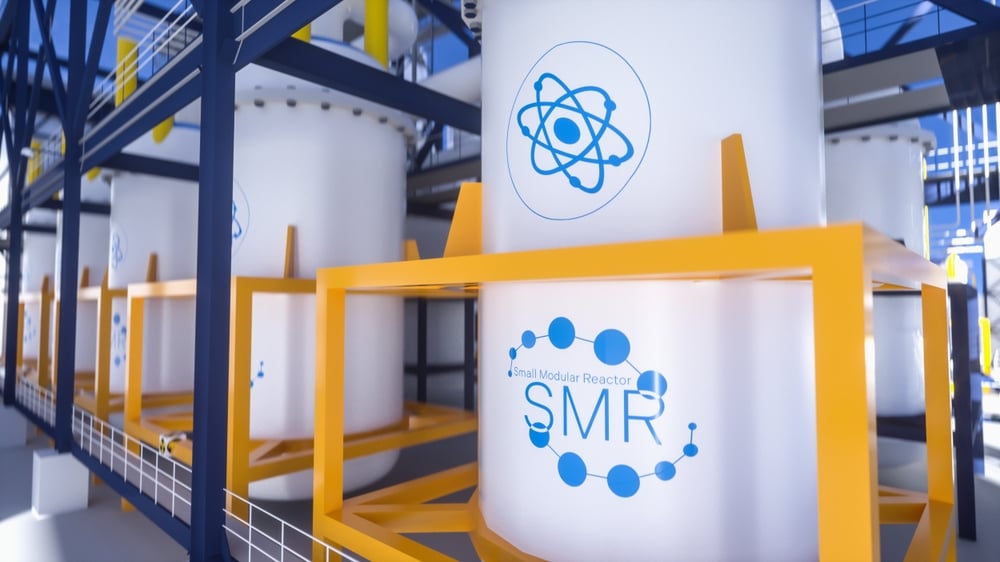The Role of AI in the Growth of Small Modular Reactors

Innovative Path Towards Clean Energy: Small Modular Reactors and AI
Nuclear energy is resurfacing as a viable option for generating clean power, particularly through the development of Small Modular Reactors (SMRs). These compact reactors promise a safer, more efficient, and cost-effective alternative to traditional nuclear power plants. This article explores how SMRs are changing the landscape of nuclear energy and the pivotal role artificial intelligence (AI) is playing in this transition.
Understanding Small Modular Reactors (SMRs)
SMRs are designed to generate electricity or heat on a smaller scale compared to conventional nuclear plants. Typically, they produce between 10 and 300 megawatts (MW) of power, which is sufficient to supply energy for a small town or large industrial facility. Unlike traditional reactors that require massive investments and can take over a decade to build, SMRs are characterized by:
- Factory Production: SMRs can be manufactured in factories, allowing for streamlined construction and quality control.
- Transportability: Their smaller size allows for easier transport to various locations.
- Faster Installation: The installation process of SMRs is quicker and less expensive, with costs generally under $2 billion.
The International Energy Agency (IEA) states that SMRs present a low-carbon power option, making them advantageous for energy transitions, especially in remote locations or in tandem with renewable energy sources like solar and wind.
The Current Landscape of SMR Development
Globally, interest in SMRs is expanding rapidly. In the United States alone, over 20 gigawatts (GW) of SMR capacity proposals have emerged, driven largely by tech companies seeking reliable energy for data centers.
Prominent utility companies, such as Dominion Energy, are planning to add 1.3 GW of SMR capacity by 2039 to meet increasing electricity demands. China is also investing in SMR technology, aiming for a significant role in its energy supply by the early 2030s. The IEA projects that low-emissions sources, including SMRs, will provide 60% of power to Chinese data centers by 2035, with the U.S. sharing a similar goal of 55%.
The Role of AI in SMR Development
Integrating AI into the design and operation of SMRs is accelerating their development. The complexities of reactor design, including optimizing component sizes, cooling mechanisms, and safety protocols, can take years of trial and error. AI technologies, especially generative AI and machine learning, allow engineers to run numerous simulations quickly.
Some key contributions of AI include:
1. **Design Simplifications**: AI can run fast simulations, significantly reducing the time required to test design variations. This helps in optimizing thermal management and safety.
2. **Material Prediction**: AI tools can forecast how different materials will react to high temperatures and radiation, which accelerates the selection of durable materials.
3. **Enhanced Fuel Management**: Efficient fuel loading strategies can be developed with AI, improving overall fuel economy and extending reactor lifespan through predictive maintenance.
4. **Streamlining Compliance Processes**: AI technologies, particularly large language models (LLMs), can simplify complex safety documentation, making it easier for regulators to assess proposals.
SMRs and Broader Energy Needs
As the demand for electricity grows and countries focus on reducing carbon emissions, the potential for SMRs to feature prominently in the energy mix appears promising. By 2030, spending on SMRs may increase significantly, with projections indicating a market growth from $5 billion today to $25 billion by 2030, and potentially $670 billion by 2050.
Emphasizing their flexibility, SMRs can be integrated into existing power generation frameworks, providing crucial support to grids dominated by intermittent renewables. They also offer a way for industries and governments to reach net-zero emissions by replacing outdated coal and gas facilities.
Tech Sector Interest in SMRs
Recent developments show that major tech companies are looking at SMRs as a reliable energy solution for their expanding data centers. Companies like Microsoft and Google are actively exploring advanced nuclear technologies. In 2023, Microsoft went as far as signing a power purchase agreement tied to nuclear energy and starting to recruit for nuclear-powered data center roles.
Such moves indicate that the drive toward SMR adoption is not solely a government initiative; it’s gaining traction among private sector players. By investing in this technology, companies hope to counterbalance increasing emissions from AI operations while supporting SMR commercialization efforts.
AI is transforming the nuclear sector, making SMRs not just a possibility, but a pivotal part of our clean energy future.






